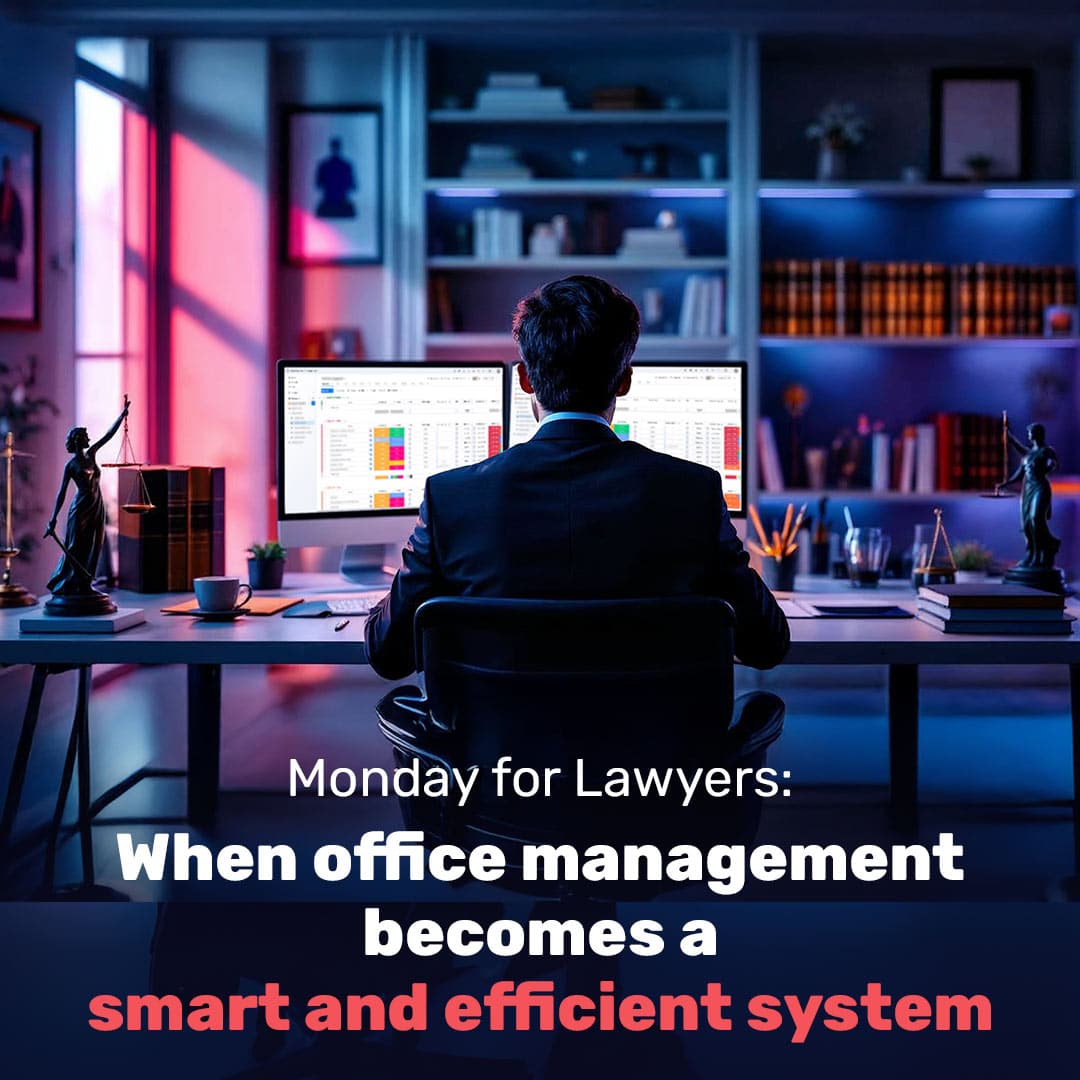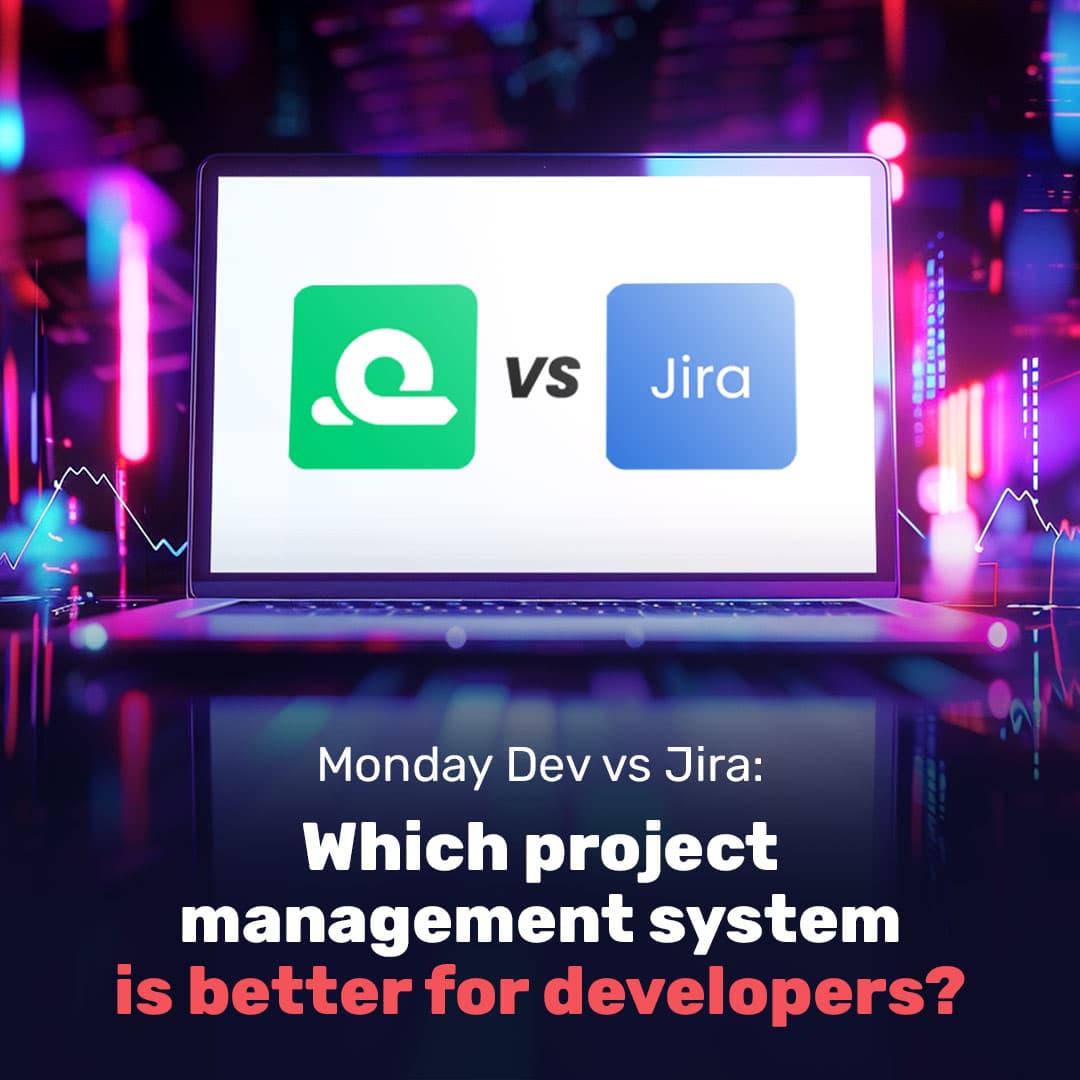In a law office every minute can influence fees, adherence to schedules, interactions with clients and sometimes even the legal outcome. A typical workday includes handling multiple cases simultaneously, coordinating between different parties, tracking hearings and deadlines, documenting actions, working with clients and suppliers and updating and storing documents and correspondence. When some information is recorded in a diary, other parts in spreadsheets, reminders in messaging apps and documents in email, it is harder to control the situation and see the full picture. In other words, the work gets done but it is scattered, not documented as it should be and wastes valuable time on internal management. Although there is a growing understanding of the need for digital tools, many offices still operate with traditional methods or rely on software that does not communicate with one another. The result is a lack of control, administrative overload and burnout, both operationally and in the quality of service to the client. This is exactly where Monday.com enters the picture: it is a system for managing work processes that allows law offices to create an orderly, clear and coordinated environment. More and more lawyers from fields including litigation, real estate, commercial law and torts are discovering how they can manage cases, clients, schedules and tasks from a single place and build simple, uniform workflows for the entire team. Monday allows you to design your office environment according to its specific needs — such as opening a new case, assigning it to a lawyer, managing the calendar, sending automatic reminders and issuing invoices. It supports daily work for both independent lawyers and offices with dozens of staff members. In addition, the system integrates with tools familiar to lawyers in Israel, including Outlook, Google Calendar, Zoom, DocuSign and dedicated legal systems and case management systems such as Legal, “Kelim Shluvim” and Net HaMishpat, so you maintain full control over every point of contact with the client and the legal system.
What makes Monday unique for law offices? Clear management, precise tracking and time savings
Although Monday was not created specifically for the legal sector, it can be adapted more precisely than most tools. Thanks to its flexible structure, any office can build boards tailored for managing cases, tasks, meetings and invoices. Lawyers, interns and office staff see exactly the status of each client, what has been done and what requires further action without searching through emails, notes or documents. In legal work, where order and precision are imperative, this is a clear advantage. One important need for lawyers is the ability to track billable hours. Monday allows organized tracking by client, case or project, including an internal timer, hours reports and custom invoices. When every minute is documented and every action recorded you can generate summary reports for any need at the click of a button. This ability reduces errors, improves transparency with the client and strengthens financial management in the office.
In addition, Monday allows implementation of simple automations such as sending notifications, reminders, status updates or opening tasks based on predefined conditions. For example, when a document is added to a particular case an update alert is sent to the responsible lawyer. Another example is setting a task for preparing a summary automatically one or two days before a court hearing. The result is less time wasted on manual tracking and more time devoted to the essence of quality legal work. Moreover, the system provides full control over everything happening in the office: who is handling what, when, what has been completed and what is still open. It reduces dependence on people’s memory or individual initiative and creates stable, precise and documented work routines, even for a young team or interns.
How does Monday integrate with existing workflows without changing the way you work?
The concern that accompanies implementing a new management system is understandable, but Monday is not intended to change the way you work; rather it is meant to improve and streamline it. It allows you to continue managing the office in the same method you know, just more smartly, accurately and under control. Instead of using many tools, manual tracking or jumping between systems, you get one work environment that unifies everything you already do today and adds a layer of management, order and automation. Monday’s approach relies on flexible adaptation to existing processes such as opening a case, assigning a lawyer, managing meetings, tracking the schedule, sending letters to clients or documenting calls. All these can remain as they are but they gain a clear framework, precise timing and shared responsibility. Many tasks that are currently performed manually, for example sending reminders for hearings, generating summaries or updating a case status, can become completely automatic through Monday’s automations.
Alongside this, the system knows how to integrate with existing tools in the office. If you work with a time‑tracking system or accounting software that has an open API, you can connect it to Monday and receive real‑time updates, activate automated processes or import data in an orderly manner. This is true as well for systems like Legal or external calendars. There is no need to abandon the tools that already work for you; instead you can make them part of a single system that presents the larger picture. All this happens without overburdening the staff, without dramatic organizational change and without an unnecessary learning curve. Monday fits exactly where it is needed: between a person and a task, between a task and a case and between a case and the management of the entire office. This gives you better control, frees up time for legal work itself and significantly reduces the operational load.
How do lawyers in different fields use Monday daily?
Implementing Monday empowers law firms across all areas of specialization to create a work environment designed not only for effective case management but also for the comprehensive management of the entire office. Whether it involves litigation, real estate or commercial law, and whether it involves collections, employee management or recruitment processes, everything is placed in a single clear and precise board. For litigation offices the system allows managing cases by stages such as filing a claim, responding, affidavits, preparation for a hearing, tracking decisions and providing ongoing client updates. Every action is documented, timed and can be allocated among the lawyers on the team. In real estate offices you can build boards for transactions that include tracking the status of the contract, coordination with authorities, land registry registration, payment management and reports to the Israel Land Authority. The system sends automatic alerts and allows documentation at each stage. In offices specializing in commercial law, contracts and ongoing advice, Monday is used to manage business clients: documenting meetings, tracking requests, receiving documents, opening recurring projects and defining a predetermined service level agreement for each client.
Monday is also suitable for managing collections and financial processes. You can build boards that combine tracking open invoices, actual payments, reminders to clients and activating collection representatives. Every action can be automated; for example a reminder notice is sent automatically after a defined number of days. Additionally it is possible to manage human resources and staff matters: onboarding new employees, recruitment processes including interviews, tests and approvals, managing vacation requests, periodic feedback conversations and even tracking a budget of hours or distributing workloads among lawyers. The process of onboarding a new client becomes clear and structured as well, from the initial call, sending an agreement, documenting the details and assigning the case to the responsible lawyer. Everything is done transparently, documented and uniform, with customized forms, clear steps and defined responsibilities.
Compliance with information security standards
Security is a prominent concern for law offices because each file contains sensitive information, communications with clients, personal documents and classified legal details. A solution is required that ensures strict protection of every piece of data. Monday.com meets the strictest international information security standards: ISO 27001, SOC 2/3 and CSA STAR. The information is encrypted both when stored (with AES 256) and during transfer (using TLS 1.2 or higher) and the system includes role‑based permissions, two‑step verification and constant monitoring of access and usage. In addition, the system enables data hosting in Europe and complies with the Israeli Privacy Protection Law.
An implementation process tailored to your needs
To ensure Monday serves your office accurately, the implementation process is built in stages that allow full customization. First there is an in‑depth mapping of processes: which types of cases you handle, how work is carried out among team members, the stages each case goes through and the interfaces with clients. Next, a technical specification document is created describing the current workflow, the goals of using the board, the required column structure, conditions for automations, types of users and necessary permissions and integration with relevant third‑party systems such as Outlook, a time‑tracking system or another legal system. Afterwards, a prototype of one board is built and launched for a small group of employees as a pilot. Only after checking and fine‑tuning the process will the boards be opened to all employees in the firm. The staff receives personal training and ongoing support over time while the system is continuously improved based on feedback from the field. This process is carried out in close cooperation with the office without dramatic changes in organizational culture and without unnecessary burden on the team. The system integrates exactly where needed — between tasks and actions and between clients and employees — so the result is precise, smart and uniform office management. Monday adapts to the office rather than the other way around.
How much time and money does switching to Monday save?
A proper implementation of Monday generates tangible benefits from the first stage. Data from Monday.com customers indicate that a correct implementation may produce a saving of approximately five to seven work hours per week per employee, depending on the scope of activity and the level of automation used. In addition, the system helps reduce errors, improve documentation processes and streamline collections and workload management. You can measure improvement through metrics such as time to close a case, response speed to the client, success rates in meeting deadlines and economic efficiency based on work hours invested versus fees collected.
How to choose a company to implement Monday professionally and accurately for you
In a law office, implementing Monday is not just installation and connection; it is a process that requires deep understanding of work processes, characterization of areas of expertise and adaptation to existing systems. Therefore it is advisable to choose a partner with proven experience in leading digital transformation processes. Web3D is an official and certified partner of Monday.com. It specializes in complex implementations both in large organizations and in small and medium offices. The company has been active in the field for over a decade, with cumulative experience of twenty‑eight years, dozens of successful projects and a professional team that includes industrial engineers, information systems professionals and consultants who know the legal world well. In addition to the specification process, Web3D offers a complete package that includes training, support and gradual implementation in different teams. The company also has a dedicated development department that creates custom integrations with external systems. In this way you can manage all your office activities from one place, without giving up your existing systems, by connecting them intelligently.
Frequently asked questions about Monday for lawyers
• What is the advantage of Monday in managing a law office? Monday allows lawyers to manage all office activities including cases, clients, tasks, schedules, collections and training. Everything converges into one system, creating order, reducing operational load and improving control, transparency and efficiency at every stage of the work.
• How does Monday integrate with existing legal software? The system supports integrations with systems commonly used in law offices, such as Legal, Tools Shluvim, Net HaMishpat, time‑tracking systems, Outlook and Google Calendar. Any system with an open API can be integrated into your Monday system so information flows intelligently between all interface points in the office.
• Does Monday meet information security requirements for lawyers in Israel? Yes. Monday meets ISO 27001, SOC 2 and CSA STAR standards, supports advanced data encryption and allows role‑based permissions. It complies with Israeli privacy protection law and offers data hosting in Europe.
• How long does implementing Monday in a law firm take? A professional implementation process usually takes between six and eight weeks. It includes mapping work processes, building customized boards, team training and a controlled pilot before full rollout and continuous use.
• Is Monday suitable for managing collections, recruitment and human resources? Definitely. Monday is also designed for supporting office processes such as tracking collections, onboarding employees, managing training, handling customer inquiries, documenting meetings and recruiting staff. Any process currently done by emails, spreadsheets or documents can be consolidated and streamlined in one system.
• How do you measure the benefit of Monday in a law office? You can measure return on investment by time saved in operations (about five to seven hours weekly per employee), improvement in documentation, reduction in errors, shortening case closure times and improved communication with clients. All these contribute directly to the firm’s bottom line.
• Who performs the implementation? It is advisable to work with an official Monday partner that has expertise in the legal field. Web3D, for example, is one of the well‑known and leading companies in Israel for implementations. With a team of industrial engineers and software developers, it accompanies the office throughout the process from initial specification to ongoing support.









